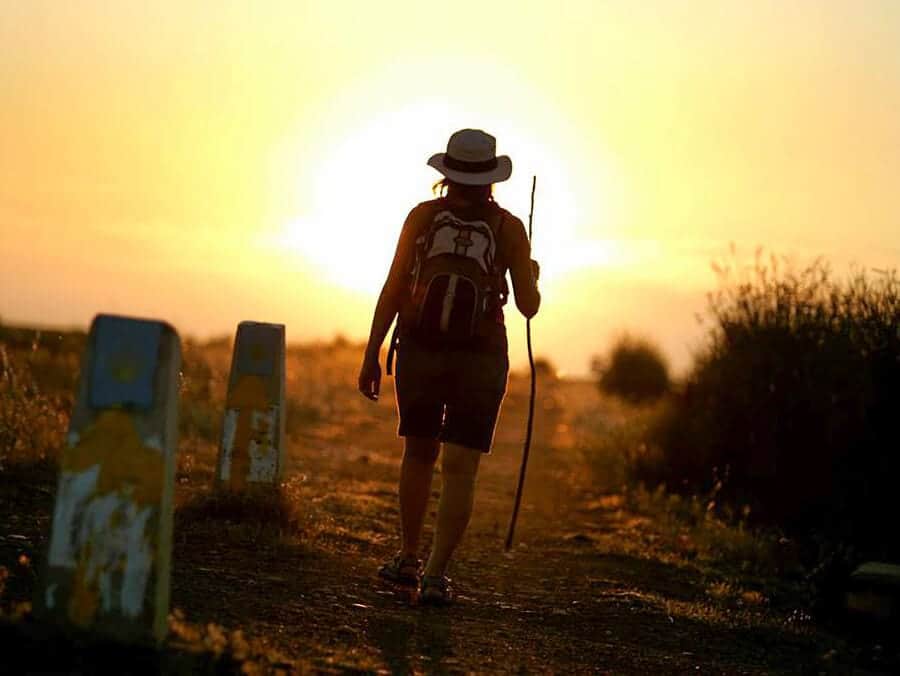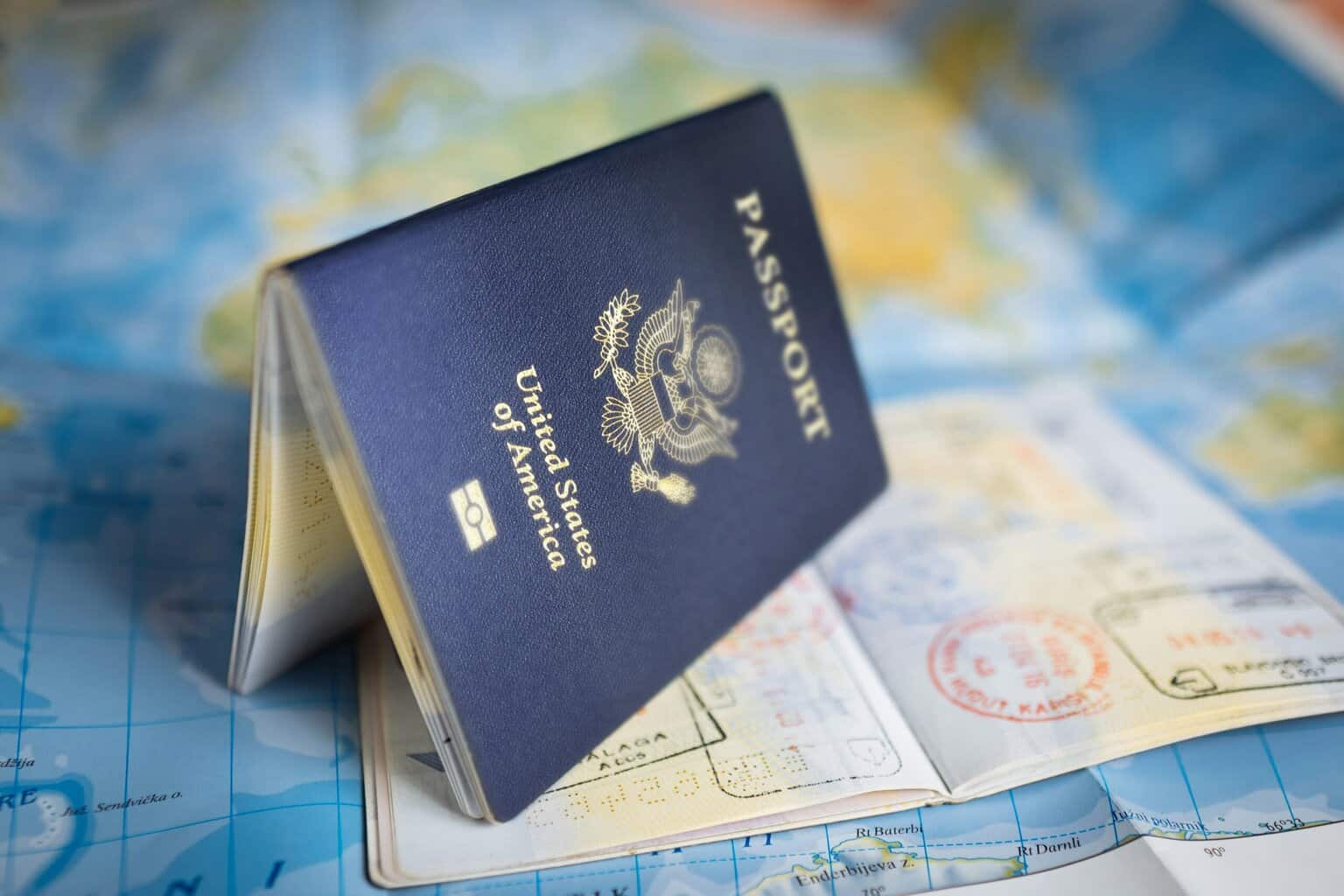Camino; El Camino; Camino de Santiago; The Way – What does it mean?
The Camino is a pilgrimage trail to Santiago de Compostela – but what is the meaning of the Camino? This pilgrimage, also sometimes referred to as El Camino, the Way of Saint James, or simply The Way means different things to different people. Let’s explore the ‘El Camino’ meaning and the translations of some keywords that you will hear when researching the Camino.
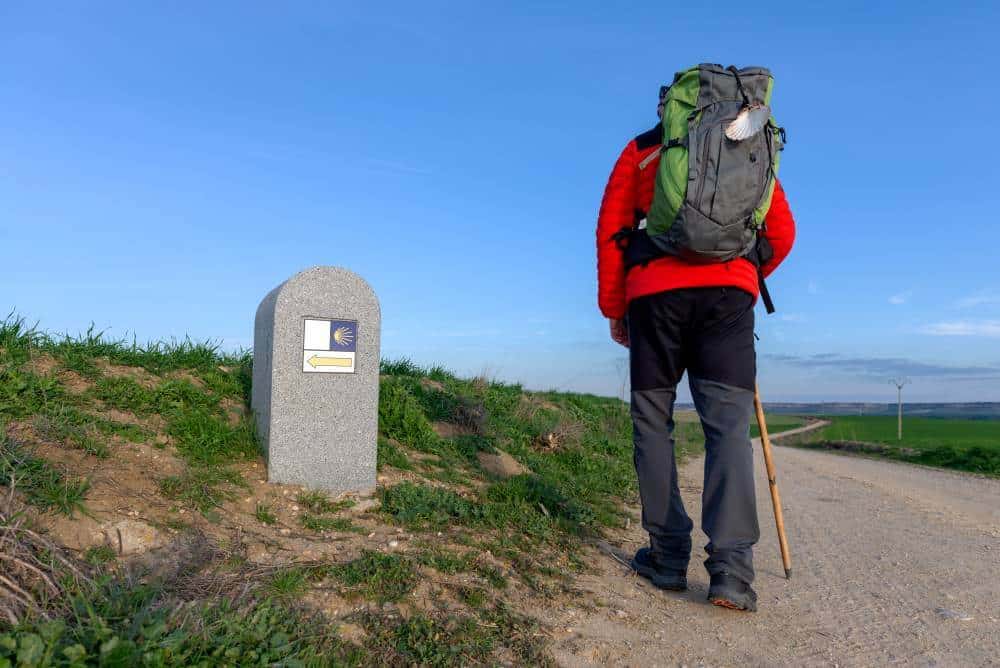
What does “Camino” translate to?
The word Camino is a Spanish word that has a number of meanings in English. The main meaning is as a track, path or road. It also can mean a literal way, route or journey. Figuratively it means path or course.
El Camino, Camino de Santiago and The Way all refer to the network of paths that are the Way to the tomb of St James in Santiago de Compostela. The translation of Camino de Santiago is roughly the Way of Saint James – or the path to the resting place of Saint James.
The Camino de Santiago pilgrimage has been walked (and cycled and done by horse!) for centuries by millions of pilgrims. Over this time various routes or “Ways” to Santiago have developed.
What does “Santiago” translate to?
The word Santiago comes from the Spanish name for Saint James – San or Sant means Saint and Iago or Yago of Thiago would be derivatives of the Spanish version of James. The name Santiago means Saint James the Greater – one of Jesus’ disciples.
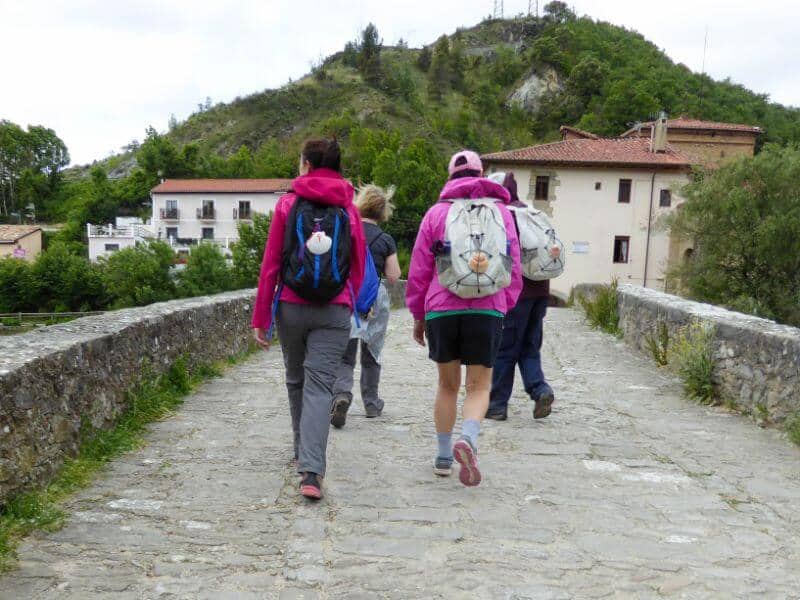
But, what does the Camino mean?
The definitions of the words can help you to get an idea of what the Camino is, but it is much more than just a path to a cathedral. The Camino is a pilgrimage with religious roots. It is a spiritual journey where you will have tough times and wonderful experiences, and meet a wide range of people. Walking the Camino offers pilgrims a sense of camaraderie and connection – everyone is heading in the same direction.
People walk the Camino to find meaning in their lives too. Often people will walk the Camino to give them time away from their normal lives. Walking 20 or more kilometres each day has a way of clearing your mind so that you can find new perspectives and consider your life.
Some people walk the Camino to process grief or the loss of a loved one. A pilgrimage can be a beautiful way to honour someone’s memory and consider the impact that they had on your life.
The Camino will mean something different to everyone, and as the saying goes – what you will find on the Camino is often not what you thought you were looking for.
What are the Camino de Santiago routes?

The Big Two
The Camino has 8 main routes to Santiago de Compostela. The most popular route is the Camino Frances which starts in St Jean Pied de Port crosses the Pyrenees and northern Spain into Santiago.
The next most popular route is the Camino Portugues which starts in Lisbon and winds its way up through Portugal before crossing the border into Spain and onto Santiago. There is also the alternative Portugues Coastal Route should you wish to experience some of the beautiful coastlines of Portugal and Spain before heading inland to Santiago.
Between them, these 3 Camino routes account for more than 80% of the pilgrims who entered Santiago de Compostela and got their pilgrim certificate in 2023.
The Less Known Camino Routes
The other routes are the Camino del Norte which stretches along the northern coast from San Sebastian to Oviedo, passing by Santander and Bilbao. To continue onto Santiago you would then follow the Camino Primitivo or Original Way from Oviedo to Santiago.
The Camino Ingles or English Way runs from either A Coruna or Ferrol to Santiago. The longest route through Spain is the Via de la Plata from Seville, through Salamanca, to Santiago. If you want to start in France, the Via Podiensis or Le Puy Route goes from Le Puy en Vale to St Jean Pied de Port. From there, pilgrims can join the Camino Frances.
Finally, the only one that starts in Santiago is the Camino Finisterre – Muxia. This route takes you to what was once known as the end of the world and you can just stop in Finisterre or you can continue on to Muxia if you haven’t had enough walking!
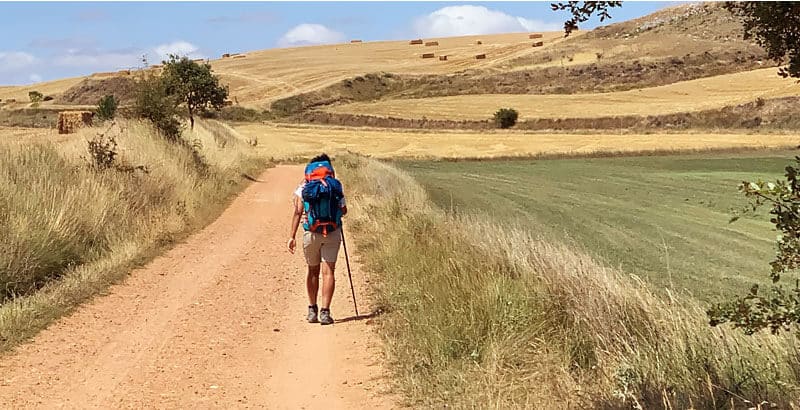
How long is the Camino de Santiago?
The Camino has various routes and these are all different lengths as you can imagine. When you set out to do the Camino de Santiago is that it is not about covering as many kilometres as possible but more about taking time to rest, letting your mind relax and appreciating the scenery along the Way.
The Camino Frances is 776kms and takes approximately 35 days to complete. When doing the full Camino Frances people often like to book in a rest day or two to rest their feet and enjoy some of the beautiful towns along the way and this is something we can assist you with. The more rest days you book in the longer your trip will be but also possibly, the more enjoyable!
Read more about how long the Camino is here.
You can also listen to more about the Camino on our podcast –
If you would like to take on the Camino and are not sure which route to do – get in touch with our expert Camino consultants! They will be able to advise you on which route is best for you.

